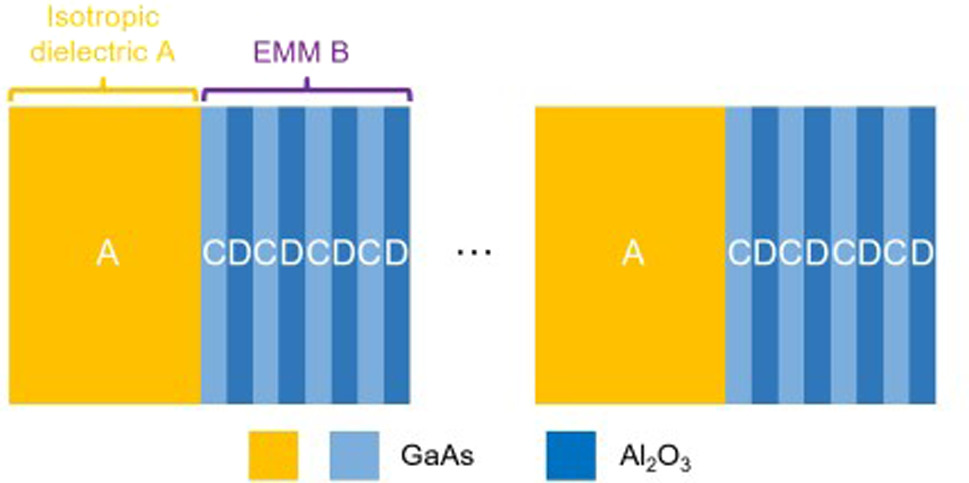https://doi.org/10.1140/epjp/s13360-024-05226-8
Regular Article
Tunable large omnidirectional photonic bandgap in a one-dimensional photonic crystal comprising elliptical metamaterials based on elasto-optic effect
1
School of Optoelectronic Engineering, Guangdong Polytechnic Normal University, 510665, Guangzhou, China
2
College of Information Science and Engineering, Huaqiao University, 361021, Xiamen, China
Received:
11
November
2023
Accepted:
29
April
2024
Published online:
14
May
2024
Recently, researchers predicted angle-insensitive photonic bandgaps (PBGs) in one-dimensional photonic crystals (1DPCs) comprising elliptical metamaterials (EMMs). Empowered by the angle-insensitive property of PBGs, large omnidirectional photonic bandgaps (OPBGs) can be designed. Nevertheless, the wavelength ranges of the large OPBGs in 1DPC comprising EMMs are fixed, which greatly hinders their broad applicability. In this paper, we design a 1DPC comprising EMMs based on elasto-optic effect. As the applied pressure increases from 0 to 30 GPa, the position of the large OPBG can be strongly tuned. Specifically, the short-wavelength edge of the OPBG increases from 1278.46 to 1528.06 nm and the long-wavelength edge of the OPBG increases from 1694.89 to 2246.91 nm. The width of the OPBG increases from 416.43 to 718.85 nm. Our work not only provides an effective approach to dynamically tuning the large OPBGs in 1DPCs, but also promotes the design of tunable omnidirectional reflectors and filters.
Copyright comment Springer Nature or its licensor (e.g. a society or other partner) holds exclusive rights to this article under a publishing agreement with the author(s) or other rightsholder(s); author self-archiving of the accepted manuscript version of this article is solely governed by the terms of such publishing agreement and applicable law.
© The Author(s), under exclusive licence to Società Italiana di Fisica and Springer-Verlag GmbH Germany, part of Springer Nature 2024. Springer Nature or its licensor (e.g. a society or other partner) holds exclusive rights to this article under a publishing agreement with the author(s) or other rightsholder(s); author self-archiving of the accepted manuscript version of this article is solely governed by the terms of such publishing agreement and applicable law.





